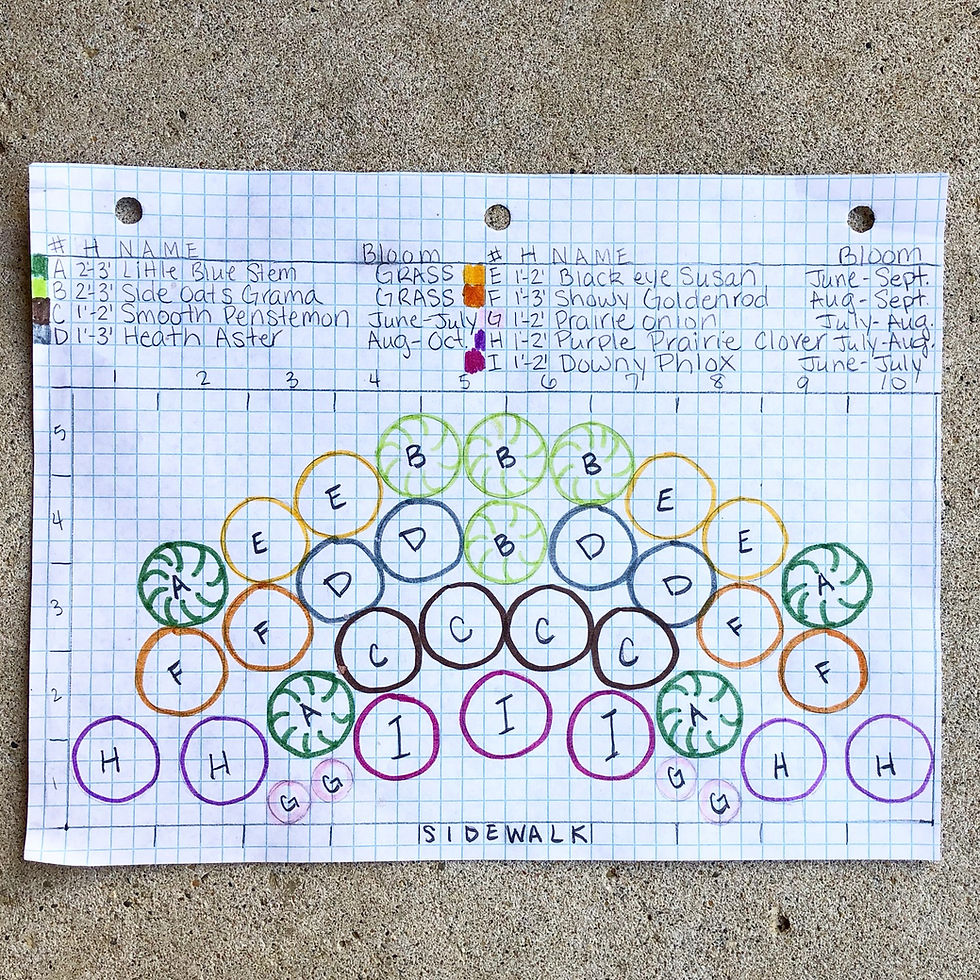Transformation Phase 1 of our "Hell" Strip...
- Marisa Prevatt

- Jun 2, 2020
- 1 min read
Let me preface this by saying I do not have any landscape design training at all! However, I put in hours and hours of research and planning into this native plant garden.

I went through several revisions to ensure I selected a variety of flowers, grasses and sedge. Each of them serve a purpose for the local wildlife and pollinators. Many, if not all, are hosts for a multitude of butterflies. Their flowers will feed pollinators such as bees, wasps, and hummingbirds. When fall/winter arrive several will continue to feed songbirds with their seed.
Did I mention that this garden will bloom June through October! As one species flowers dwindle the next is ready to bloom. I selected a variety of colors and shapes to make it interesting all season long. Anyhow I am super proud of this garden and all the hard work and planning has paid off! It was a great project and our whole family participated in the creation of it. The awesome thing is it will only grow bigger and better each year! I am working on adding a page to my website that will contain a downloadable design plan and plant list for this low growing garden. It is a perfect starter project and I hope to make it easy for others to create their own “pocket prairies” in their yards. Check out our installation video...






Comments